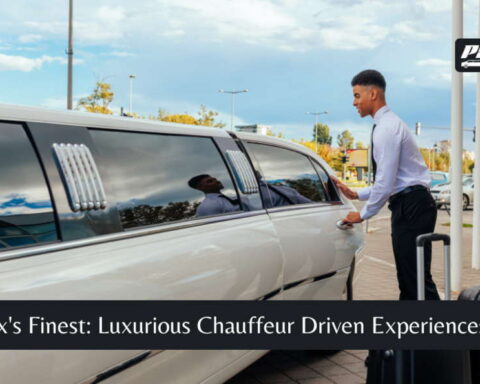Introduction:
Commercial roofing is a crucial aspect of any building structure, providing protection against the elements while also contributing to its overall aesthetics and energy efficiency. Understanding the various types of commercial roofing options available is essential for property owners, developers, and contractors alike. In this guide, we’ll delve into the diverse range of commercial roofing materials and systems, exploring their unique characteristics, advantages, and considerations.
Built-Up Roofing (BUR):
· BUR consists of multiple layers of bitumen and reinforcing fabrics.
· Offers excellent durability and resistance to weather elements.
· Ideal for low-slope or flat roofs commonly found in commercial buildings.
· Requires professional installation due to its complexity.
Built-Up Roofing (BUR) is a traditional and widely used method for flat or low-slope roofs. It consists of multiple layers of bitumen surfaces alternated with reinforcing fabrics, typically fiberglass or organic mats. These layers are then topped with a coating such as gravel or mineral granules for protection against weathering.
The layers of bitumen and reinforcement are built up to create a durable, waterproof membrane that provides excellent protection against water infiltration and weathering. BUR systems are known for their longevity and resistance to damage from foot traffic and UV exposure.
Installation of BUR involves heating and melting the bitumen, then applying it to the roof surface in layers, with each layer being allowed to cool and harden before the next is applied. This process results in a seamless membrane that provides excellent waterproofing properties.
One of the advantages of BUR systems is their versatility; they can be installed on almost any type of roof deck and are suitable for both new construction and roof replacement projects. Additionally, BUR systems can be customized to meet specific performance requirements and are available in various surfacing options to suit different aesthetic preferences.
While BUR systems offer many benefits, they also have some drawbacks. The installation process can be labor-intensive and may require specialized equipment and skilled labor. Additionally, the use of hot asphalt and open flames during installation poses safety risks, and proper ventilation is essential to prevent exposure to fumes.
Overall, Built-Up Roofing remains a popular choice for commercial and industrial buildings due to its durability, longevity, and proven performance in a wide range of environments.
Modified Bitumen Roofing:
· Utilizes asphalt-based materials modified with rubber or plastic.
· Provides enhanced flexibility and weather resistance.
· Installation options include torch application, cold adhesives, or self-adhering sheets.
· Offers a cost-effective solution with relatively easy maintenance.
Modified bitumen roofing is a type of roofing system that combines the durability of traditional built-up roofing (BUR) with the flexibility of a modern polymer-based membrane. It is commonly used on low-slope or flat roofs in commercial and residential buildings.
Modified bitumen roofing membranes are typically composed of asphalt or bitumen, which is modified with polymers such as atactic polypropylene (APP) or styrene-butadiene-styrene (SBS) to enhance performance characteristics like flexibility, elongation, and resistance to weathering. These modifiers improve the membrane’s ability to withstand temperature changes, UV exposure, and foot traffic, making it more durable and longer-lasting than traditional BUR systems.
Modified bitumen roofing systems are available in various installation methods, including torch-applied, hot-mopped, cold-adhered, and self-adhered systems. The choice of installation method depends on factors such as roof design, local building codes, and the skill level of the roofing contractor.
One of the advantages of modified bitumen roofing is its ease of installation compared to traditional BUR systems. It offers excellent waterproofing properties, flexibility, and resistance to cracking and splitting. Additionally, modified bitumen roofing systems are available in a range of colors and surface textures, allowing for aesthetic customization.
However, like any roofing system, modified bitumen has its limitations and considerations. Proper installation is crucial to ensure optimal performance and longevity. Additionally, maintenance, inspection, and repair are essential to address any issues promptly and prolong the life of the roof.
Overall, modified bitumen roofing is a popular choice for flat and low-slope roofs due to its durability, flexibility, and ease of installation. It provides reliable protection against the elements and can be customized to meet the specific needs of different buildings and climates.
Single-Ply Membrane Roofing:
· Popular options include TPO (thermoplastic polyolefin), PVC (polyvinyl chloride), and EPDM (ethylene propylene diene terpolymer).
· Lightweight and flexible membranes installed in a single layer.
· Resistant to UV rays, chemicals, and punctures.
· Suitable for various commercial roofing applications, including flat and sloped roofs.
Metal Roofing:
· Available in materials such as steel, aluminum, copper, and zinc.
· Provides longevity, durability, and energy efficiency.
· Offers a variety of styles and finishes to complement architectural designs.
· Can be installed as panels, shingles, or standing seam systems.
Spray Polyurethane Foam (SPF) Roofing:
· Applied as a liquid that expands into a foam layer, creating a seamless roofing membrane.
· Offers exceptional insulation properties, reducing energy costs.
· Requires proper surface preparation and professional application.
· Not suitable for all climates, as extreme temperatures can affect performance.
Green Roofing Systems:
· Incorporates vegetation and landscaping elements on the rooftop surface.
· Provides environmental benefits such as improved air quality, temperature regulation, and stormwater management.
· Requires structural support and waterproofing systems.
· Offers aesthetic appeal and potential LEED certification credits.
Asphalt Shingles:
· Commonly used for steep-slope commercial roofing applications.
· Available in various styles, colors, and textures.
· Offers affordability and ease of installation.
· Requires proper ventilation and maintenance to ensure longevity.
Solar Roofing:
· Integrates photovoltaic (PV) panels into the roofing system to generate electricity.
· Provides renewable energy solutions and potential cost savings.
· Requires adequate sunlight exposure and proper orientation for optimal performance.
· Initial installation costs may be higher but can lead to long-term savings on energy bills.
Cool Roofing:
· Utilizes reflective materials to reduce heat absorption and lower indoor temperatures.
· Helps mitigate the urban heat island effect and decrease cooling costs.
· Available in various roofing materials, including single-ply membranes, metal, and coatings.
· Can contribute to energy efficiency credits and certifications.
Ethylene Propylene Diene Monomer (EPDM) Roofing:
· EPDM membranes are made from synthetic rubber materials.
· Offers excellent weather resistance and durability.
· Suitable for low-slope and flat roofs in commercial applications.
· Requires proper installation and maintenance to prevent leaks and damage.
Clay and Concrete Tile Roofing:
· Provides a classic, durable roofing solution with a lifespan of 50 years or more.
· Available in various profiles, colors, and textures to suit architectural styles.
· Requires reinforced roof structures due to their weight.
· Offers natural insulation properties and resistance to fire and pests.
Composite Roofing:
· Combines different materials such as asphalt, fiberglass, and recycled materials.
· Offers versatility, durability, and environmental sustainability.
· Available in shingles, shakes, and tiles with enhanced aesthetic appeal.
· Provides a cost-effective alternative to traditional roofing materials.
Conclusion:
Choosing the right commercial roofing system involves careful consideration of factors such as climate, building design, budget, and maintenance requirements. By understanding the diverse range of options available, property owners and developers can make informed decisions to ensure long-term performance, durability, and sustainability for their commercial buildings. Whether it’s traditional materials like asphalt and metal or innovative solutions like green and solar roofing, each option offers unique benefits to meet the specific needs of commercial properties.
First Choice Roofing team is fully licensed commercial roofing contractors southington ct, insured, and bonded: as well as passionate about the work that they do. We believe this shows on every job that they complete. From installing quality roofing that lasts a lifetime to fixing your roof, our crew truly cares about the results provided to our valuable customers. Right from our first phone call, you’ll find knowledgeable advice and affordable solutions for any roofing work you may be facing. That’s the First Choice Roofing promise!



























